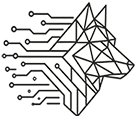Most companies think the secret to great AI is finding the right prompt. It’s not. AI doesn’t have the secret sauce your engineers hold in their heads — it mimics patterns it’s seen before. If you want it to actually build or fix something novel to your enterprise, you have to understand the concept of Context Engineering.
The biggest mistake teams make today is focusing 80% of their time crafting prompts and only 20% feeding the system real context. It should be the opposite. You should spend 80% of your time providing the AI with background, data, and calibration — the stuff that makes it think like your organization, not a public model.
Think of it like onboarding an entry-level developer. You wouldn’t hand them a complex system and say, “build this,” with no documentation or mentorship. You’d invest time transferring internal knowledge — your architecture, workflows, naming conventions, and past mistakes. That’s what Context Engineering is: onboarding your AI so it actually understands how your world works before you expect it to produce something useful.
When teams get this right, the results are real — code that actually works. Small, purposeful, and high-impact snippets replace giant, brittle monoliths. The AI starts creating in ways that align with your design intent rather than inventing chaos.
And this is just the beginning. As AI learns to operate within your architecture, it will evolve beyond it — designing new foundations, proposing better patterns, and ultimately reshaping how systems are built. Context Engineering isn’t just about making AI effective inside your four walls; it’s about preparing your company for what comes after.




